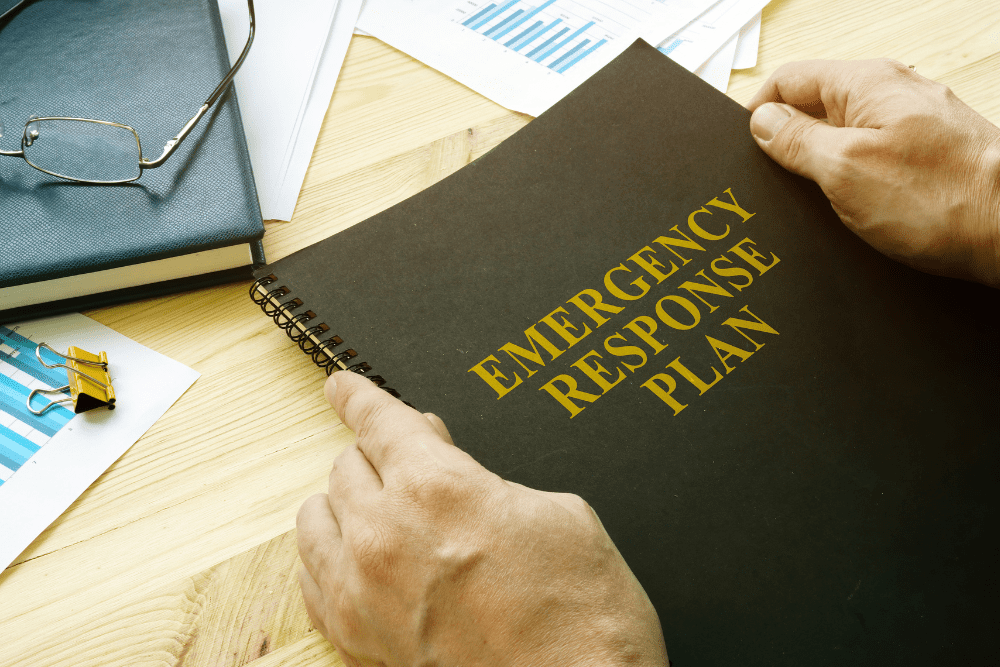Effective disaster management requires a coordinated approach from government agencies, private organisations, and local communities. A risk assessment in disaster management conducted through a risk matrix can be used to achieve this goal.
Australia’s disaster management efforts have improved steadily since 2022 in the face of the multiple floods and fires that the country faced. The National Emergency Management Agency (NEMA) was founded on the 1st of August 2022 to respond to emergencies, help affected communities recover, and prepare Australia for future emergencies.
In the context of risk management, disasters can be natural phenomena like wildfires, floods, earthquakes, and hurricanes, or caused by human activities, such as industrial accidents, transportation accidents, and terrorist attacks.
This environment calls for effective disaster management efforts and one of the most effective ways of ensuring preparedness is through a risk assessment in disaster management.
Risk matrices for disaster risk management
As a tool that is used to assess the likelihood and impact of potential risks in a visualised format, risk matrices can be particularly useful for disaster risk management.
Risk matrices can be used to identify and prioritise a wide range of disasters that can affect the locale and infrastructure of Australia and develop strategies to reduce their impact and enhance disaster preparedness. They can also be used to evaluate the effectiveness of mitigation measures—allowing them to be improved upon over time.
For disaster risk management, risk matrices typically take the form of a 3×3 matrix. The likelihood and impact of risk are divided into 3 types, in the form of low, medium, and high.
Once risks are identified and categorised within the matrix, strategies can be put in place to counteract the effects of the different disasters. These may include strategies for risk reduction or disaster preparedness like investing in stronger infrastructure, developing emergency response plans, and educating local communities on emergency response practices.
Step-by-step guide to risk assessment in disaster management with a risk matrix
The steps mentioned below must be followed to develop a risk matrix for disaster management.
- Hazard identification
Identifying all potential hazards that could occur within the relevant area, project, or locale. - Hazard assessment
Determining the likelihood and severity of identified hazards and assigning levels in the 3×3 risk matrix. - Risk determination
Using the developed risk matrix to identify and determine the relevant risk levels for each hazard. - Control development
Developing control measures to bring the risk levels down as low as reasonably practicable (ALARP). - Control implementation
Implementing the developed control measures within each area, project, or locale through relevant personnel. - Emergency Response Plan preparation
Preparing an Emergency Response Plan to deal with any emergencies that could occur from disasters.
Key elements of effective disaster management
With the steps to conducting an effective risk assessment in disaster management with a risk matrix understood, here are some other key elements that must be present for effective disaster management.
- Coordinating response efforts across multiple stakeholders to ensure efficient and effective management.
- Supporting the recovery efforts of affected communities and organisations for faster recovery.
- Educating and raising awareness of potential disasters to improve the response capabilities of communities.
Conduct an effective risk assessment in disaster management with a risk matrix for optimal outcomes
A risk matrix not only provides a highly structured approach to risk assessment but it is also a much more accessible and comprehensible form of assessment.
The structured approach ensures that risks are assessed comprehensively so that there is very little room for error or oversight, and the accessibility ensures that all stakeholders involved in disaster management can get a simplified view of the disaster risk landscape they are facing.
By following the step-by-step guide detailed above, government agencies can ensure a higher standard of disaster management complete with improved awareness and collaboration and better response methodologies.
Leverage SECTARA’s expertise in government risk management for effective disaster risk management
Conduct effective government risk assessments and ensure disaster risk resilience in the long term with our risk management solutions.
SECTARA’s risk management solution ensures compliance with local and global standards and best practices for risk management such as ISO 31000, NIST, ISO 27005, PSPF, and more.
Our risk management software is designed for simplicity, precision, and accessibility so that any level of risk practitioner can take advantage of its capabilities.
Try out SECTARA for free for 14 days. Sign up for the free trial by clicking the button below.






